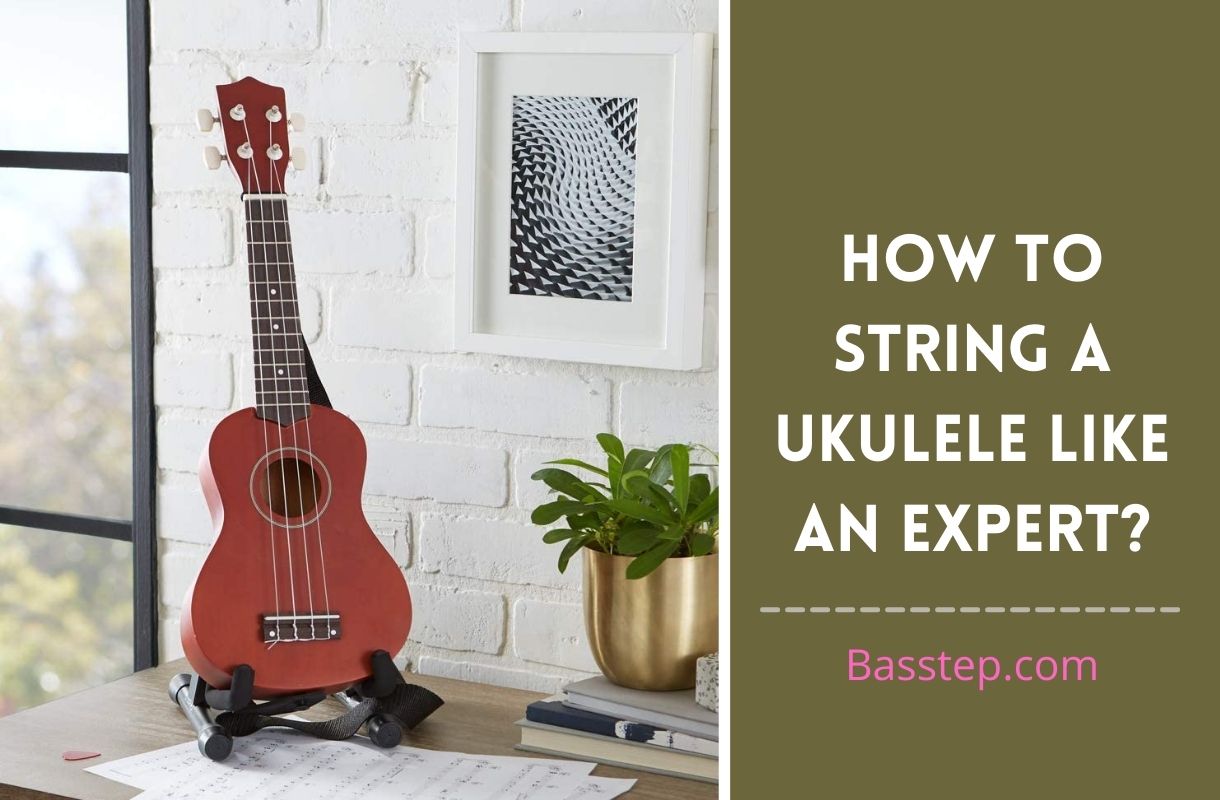
“What is ukulele, and how are ukuleles like?” This is the question that is mostly found on the lips of many persons around the globe. Ukulele falls among the string instruments. There are four types of ukulele and they are soprano, concert, tenor, and baritone.
These listed types of ukuleles are all different from each other by sizes. And the easiest way to identify ukuleles generally is by the stings. Ukuleles have four on their soundboard which is attached from the bridge to the tuner.
Ukuleles don’t use metal strings but nylon strings. And this leads to why ukuleles have to turn its output shaft several times before the input shaft can turn.
However, the nylon strings that ukuleles use are easy to strum compared to metal strings. Furthermore, strings on ukuleles don’t often get in tune on time immediately it’s purchased.
If in case you notice this, the best action to carry out is to stretch the strings consistently until the tune of the string becomes lucid.
The string is the ultimate feature that defines the authenticity of a string instrument. Strings can be glittering and strong before they begin to yield out of strength. And that’s why they need to be constantly maintained as to keep them off oxidation and damages.
Many think that keeping string instrument only in cool and safe place is the best thing to do. Without bothering about cleaning the strings and using a movable bag (insulated) for saving it.
In fact, some even profess to consistently clean it but they are frivolous about totally detaching the strings. Is this how you take care of your string instrument also?
If yes! Then save the longevity of your instrument by meticulously studying this subject with us.
8 Things About – How To String A Ukulele?
Understand the Components
Here, we’ll be considering the major parts of the ukulele that pertains to this subject and where they’re located.
1. Bridge:
This is the part of the ukulele that strings pass through. It’s found on the body of ukuleles and it’s located behind saddles. On bridges are holes where fitting strings can easily penetrate.
2. String:
This is the thin long thread which is mostly soft when touched. They simply can’t stand on their own not until they are knotted.
3. Nut Slot:
If you check the saddle on the body, and check the nut (it’s found at the extreme of the fingerboard), you’ll agree that they look the same.
In fact, the only difference between them is that one is shorter than the other. Now, the nut slot is the tiny gully-like shape/space that’s made on the nut where strings can pass through.
4. Fret:
This is the chord on fingerboards that players use to pitch a note.
5. Tuner:
This a component that’s found on headstocks that helps in producing suitable sounds.
Preparation
- Before stringing, ensure that preparations are made.
- Make sure that you get a wiper/clean piece of cloth to clean the instrument, especially the strings.
- Make sure that you hand and the wiper that you intend using are free of moisture.
- The environment is free of dirt and moisture to Make sure.
- Evaluate the string you’re about using. Check the size, the strength, and the length of the strings.
- Get the replacing string in a visible area.
6. Unwind The Keys
- To remove the strings, get the instrument and grip it by the neck or lay it on your thigh.
- Use a feeble hand to hold the neck and the agile hand to turn keys ant-clockwise.
- Whenever you notice slackness in the strings, position the whole instrument on your thigh and face the strings upward.
- Then begin to gently remove the string that attached to the turning key as you meticulously turn the strings.
- It’s advisable to pull the strings from bridge holes, so as to ensure the safe removal of the strings.
Insertion: 1st Step
- I believe you must have removed the latter by now. But if you plan on replacing it with another then this instruction is best for you.
- Pick up the new string and clean it up by wiping it.
- Pass it through the bridge after you had identified that the string you’re using is the most appropriate.
- Pull it from the end then pull it straight over the saddle, then to the soundboard.
- It doesn’t have to be too easy to pull and neither is it compulsory to be too tight.
Insertion: 2nd Step
- I guess the instrument is laid on your thigh when you were inserting the string. If not, you can put lay it horizontally on your thighs cleaved together.
- Make sure that the soundboard is facing upward.
- Now, use one hand to hold the inserted tip and the other hand to grip the body and deftly file the part of the string in the bridge.
- Make sure that the part of the string that passes the bridge are few inches.
- Knot the few inches to the part of the body by turning it around the body.
- Haul the full string with its part attached to the bridge on the whole ukulele.
Insertion: 3rd Step
- Please note that there are four bridge hole and four nut slots. So, if you’re slotting in a string in any aperture, the hole it passes must be tangential to the slot that it passes.
- Now pinch down the string as it passes through the slot (pull back a distance of two frets for relief).
- Pass the string over to the tuner and tie it once to the neck (underneath the crown) and wrap the rest on the body.
- Now, once this is done, you can tighten the string down by turning the tuner clockwise.
7. Tuning and Strumming
When the insertion is over, it’s expected that you clean the inserted string with wiper. Because cleaning it will help in the reduction of oxidation that may be caused by the relative contact between your finger and the string.
Even though it’s expected that one should do this after using it, yet it’s paramount to clean it before using it also. Now that you’ve inserted it and you want to begin using it, you’d want to check the sound, right?
So, it’s essential that you consistently turn the turner and strum to fully know whether you’re satisfied or not. Of course, you’ll get the expected sound if the string is recommended for this type of ukulele that you’re using.
8. Repeat It
This information is the most reliable way to do it. In other words, it can be used for fixing and removing of strings on any string instruments. All you’ve to do is follow the systematic illustration of doing it until you master it.
Final Verdict
This is how to string a ukulele like an expert. This information is highly researched and they are dependable for DIYers’ use. There are types of strings that you can find in the market for sale.
And that’s why it’s expected for buyers to know the most suitable string and the type of bridge that their ukuleles have, whether it’s tie-bar (small hole) or standard so as to ensure that the fixing of strings is not problematic.
We hereby hope this information is of an immense help as to help knowledge enthusiast and users in achieving their goal.
